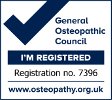Where is your groin pain coming from?
Groin pain can be a tricky problem because the location of the pain can often be a poor indicator of where the issue originates. This can be further complicated if the problem becomes chronic (over about 3 months) as there can be an accumulation of different issues adding further layers of complexity. It is very important therefore that your Osteopath or manual therapist makes a clear diagnosis and works through the possible possibilities thoroughly.
Causes of groin pain
It’s important to look beyond the diagnosis of ‘groin sprain’ – a strain or sprain of the adductor muscle or the psoas muscle tendons and consider the following:
1) Hip joint – perhaps surprisingly approximately 50% of groin pain can be attributed to the hip:
- Femoral Acetabular impingement syndrome (FAI) – the acetabular labrum (cuff around the hip joint) tears usually due to repetitive trauma or can be genetically predisposed. The pain can be worse with exercise, sitting or standing and can be brought on by bringing the leg towards the chest, turning it inwards and drawing it towards the middle of the body (i.e. compressing the groin area). This issue needs to be addressed as ignoring it can lead to osteoarthritis in the hip in the long term. FAI may require treatment with hip arthroscopy surgery but, in some cases, injection therapy and robust Osteopathy may be enough to get the person back to full activity.
- Slipped epiphysis – teenagers can have a slipped epiphysis where the ball at the head of the femur (thighbone) slips off the neck of the bone in a backwards direction.
- Avascular necrosis – usually in 20 to 50 year olds, avascular necrosis also be a problem where the head of the femur receives less and less blood supply.
- Arthritis – hip osteoarthritis can cause groin pain
- Hip bursitis – small fluid-filled sacs around the hip become inflamed and refer pain to the groin
2) Referral or nerve compression originating from the lumbar spine
3) Pubic overload (osteitis pubis) – inflammation of the pubic symphysis and the surrounding muscles often due to overuse or repetitive trauma such as in footballers or athletes
4) Abdominal wall hernias – may cause pain a little higher in the groin
5) Rectus femoris tear – rarer and in younger patients, the rectus femoris may pull away from its attachment onto the pelvis in the groin area
6) Testicular tumors – other symptoms may include night pain, severe pain on loading the leg, weight loss or systemic (body-wide) symptoms such as fever
If you are experiencing hip and groin pain, an osteopath can help. Your osteopath will assess your lower back and lower limb movement in order to work out the source and cause of your pain. They will look at the other muscles around your hip and groin to see whether they are impacting on your health. Your osteopath will then set out a treatment plan designed to help alleviate pain and return the affected area to normal health and movement.







